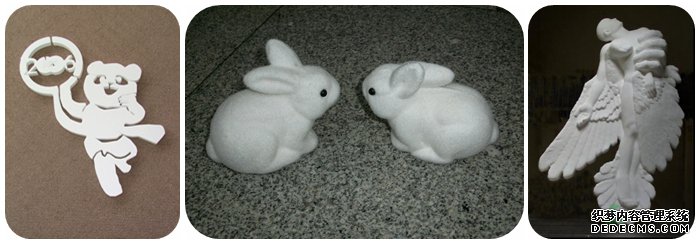EPS Sculpture Art: Lightweight Material, Myriad Forms
Update: 2023-07-27 16:07 View:
EPS Sculpture Art: Lightweight Material, Myriad Forms
Sculpture art has always been an important form of expressing creativity and beauty for humankind. With the advancement of technology and innovation in materials, sculpture art is gradually taking on a new appearance. Among the contemporary art scene, one lightweight material - EPS, or Expanded Polystyrene foam, is gaining popularity among sculptors. Its unique lightweight property and diverse forms inject fresh creativity and vitality into the world of sculpture art.

The lightweight nature of EPS material opens up new possibilities for sculpture creation. Thanks to its porous structure and low density, EPS is exceptionally lightweight, making it a much more convenient choice compared to traditional sculpting materials. This newfound freedom allows artists to express their creativity more liberally. Whether carving out elegant and flowing lines or constructing intricate and versatile sculptural forms, EPS material proves to be an adept assistant in bringing their artistic visions to life.
In sculpture exhibitions, the innovative use of EPS material captures the audience's attention. An increasing number of artists are experimenting with EPS to craft large-scale sculptures. The lightweight feature of EPS seemingly defies gravity, challenging the conventional notion of heaviness often associated with traditional sculptures. These artworks often take center stage in exhibitions, attracting a plethora of spectators. Moreover, artists skillfully combine multiple EPS sculptures to create artistic installations that immerse viewers in a truly captivating art experience.
Beyond exhibitions, EPS plays a significant role in urban public installations. Many cities embrace EPS as the preferred material for public art installations, including urban sculptures and plaza decorations. EPS's lightweight quality not only facilitates transportation and installation but also infuses public spaces with a lively and dynamic ambiance. These public installations often become iconic landmarks that draw countless citizens and visitors, enhancing the cityscape with a distinctive artistic charm.
In addition to its creativity, EPS material also stands out for its environmental friendliness. EPS is recyclable, causing minimal environmental impact compared to traditional sculpting materials. In an era when environmental awareness is on the rise, more artists opt for EPS material to integrate eco-friendly concepts into their creations, showcasing the amalgamation of responsibility and creativity in art.
Looking ahead, the future of EPS material in the realm of sculpture art appears to be promising. This lightweight material has unlocked vast creative spaces and a myriad of expressive techniques for artists. With continuous innovation in EPS material and artists' enthusiastic exploration, sculpture art is expected to exhibit even greater diversity and richness, presenting the world with an abundance of aesthetic pleasure. Let us all anticipate the artistic wonders that EPS material will continue to bring forth.
- 上一篇:EPS Raw Material Selection Guide
- 下一篇:没有了

